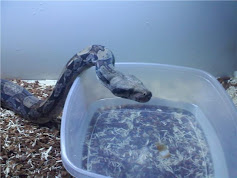
Bearded dragon lizards are native to Australia. They live in rocky and arid regions of the country and are adept climbers. Dragons have large triangular heads and flat bodies with pointed ridges along the sides. They are omnivorous, eating both insects and plants.
Pet Bearded Dragon Facts
Bearded dragons make a great pet lizard. They don’t get too large, eat a wide variety of foods, are active during the day, and are gentle animals. Bearded dragons are captive bred, have limited care requirements, readily available, and inexpensive. A bearded dragon can be a great addition to your family.
Fun Fact:
Bearded Dragons are Australian immigrants and are often described as sort of like iguanas or horned lizards. Here are a few interesting factoids.
The beard is intended to make the lizard look larger to potential foes. This is a common defense mechanism using a sort of camouflage to disguise their true capability like small men wearing thick jackets to appear bulkier and more muscular.
Bearded Dragons in the wild will often stand up on their hind legs to run from danger. This is actually slower than running on all fours, and might be a form of temperature control. The animals produce heat while running, and being cold blooded, have no good way to regulate their body temperature. Running on their hind legs puts their body farther away from the hot ground and improves airflow around them. This should allow them to run farther before having to stop.
They have a limited ability to change their color. In the wild, this is also used to hide and to regulate body temperature. Lighter colors reflect more light away from the body. This can also be used to show an emotional state, and when ill or injured they often have a black back and pale yellow legs. Despite this, the animals will attempt to hide illness until it becomes serious, possibly as a survival mechanism.
They should be kept away from lightning bugs, which are poisonous due to the phosphorous content.
Bobbing the head rapidly and a slightly curved tail tip show aggressiveness, while circular movements of the arms like waving show submission. They do ritualistic sparring matches with two bearded dragons circling each other, flat to the ground, beards and tails up and out, while biting each other’s tails. Usually no damage is done. Some owners report they can mimic this behavior patterns and get a similar response from their dragons, to the point of even maintaining eye contact.
The young are semi-arboreal, and spend much time in trees in the wild. Even the adults like to climb. While they are desert creatures, this does not mean they are well adapted to sand, which can be dangerous to them. Sand has sharp edges and can compact in the digestive system, blocking it and leading to death when the animal consumes it.
Breeders have managed to produce a variety of skin colors, but lizard green hasn’t yet been managed. Colors that exist include pastel oranges, violets and reds, with some popular morphs including “sand fire” and “tiger.”
The proper scientific name for the black soil bearded dragon is the Pogona henrylawsoni, and this particular species is often called Lawson’s Dragon and sometimes Rankin’s. The genus name is Pogona, but this was previously Amphibolurus, and books more than a couple of years old will show those names instead.
Bearded Dragons are fond of collard greens, suggesting that I might need one to consume that particular veggie so I won’t have to do so.
Boa.jpg)



No comments:
Post a Comment